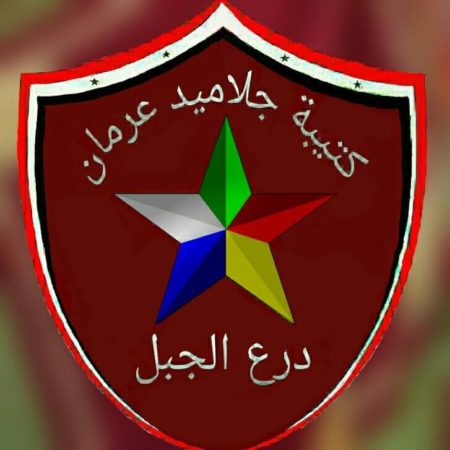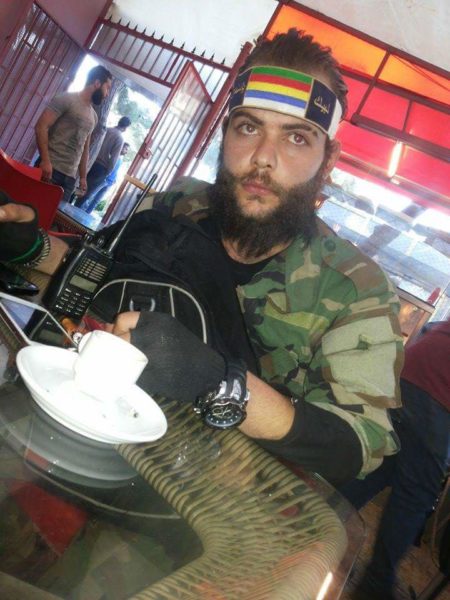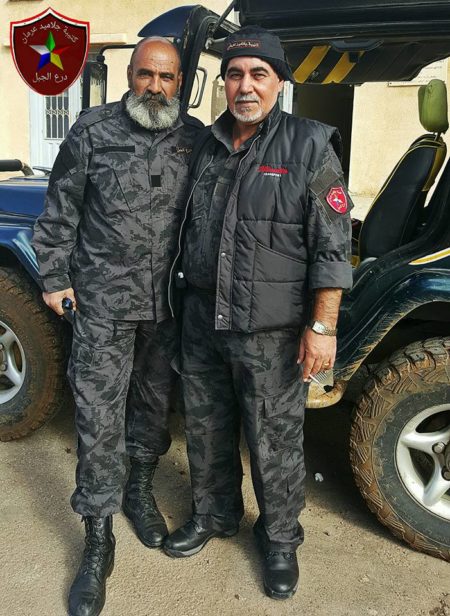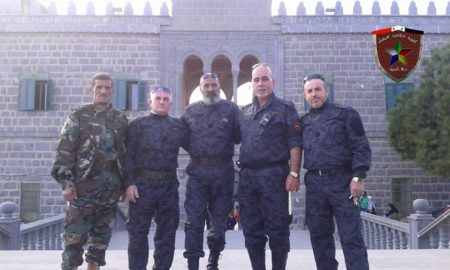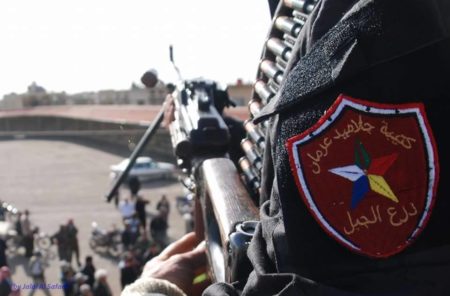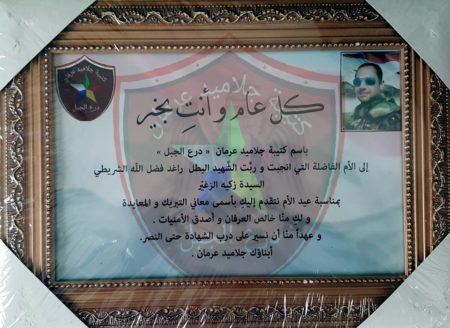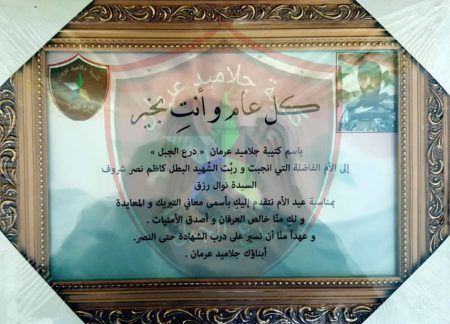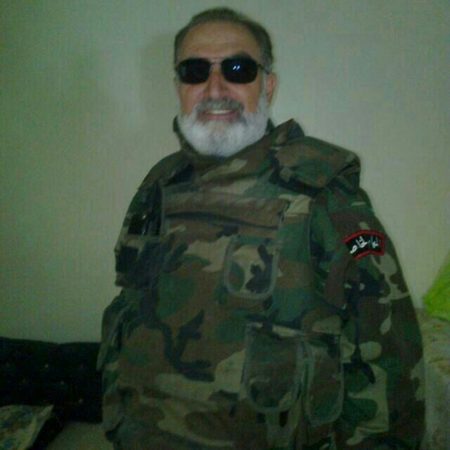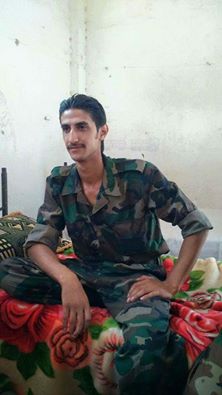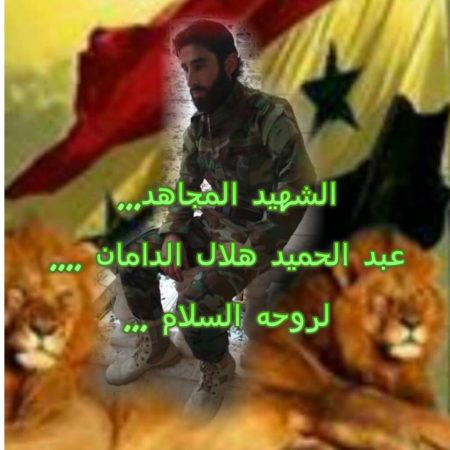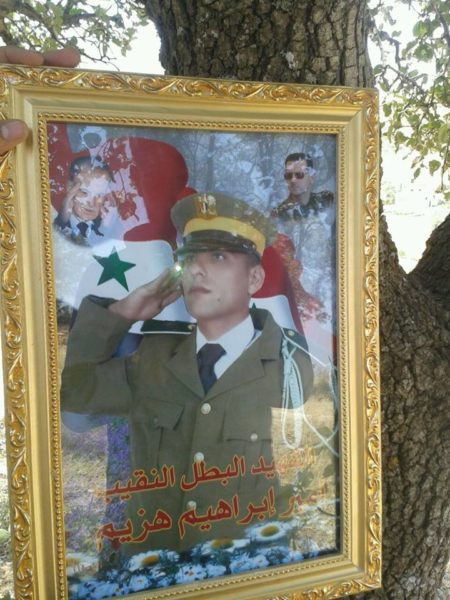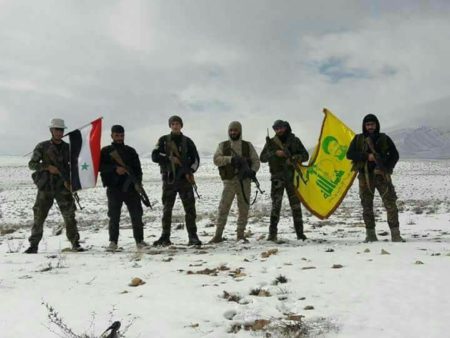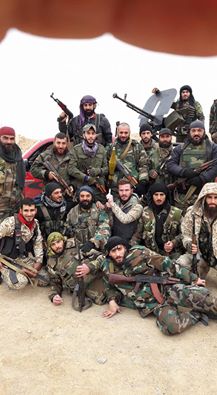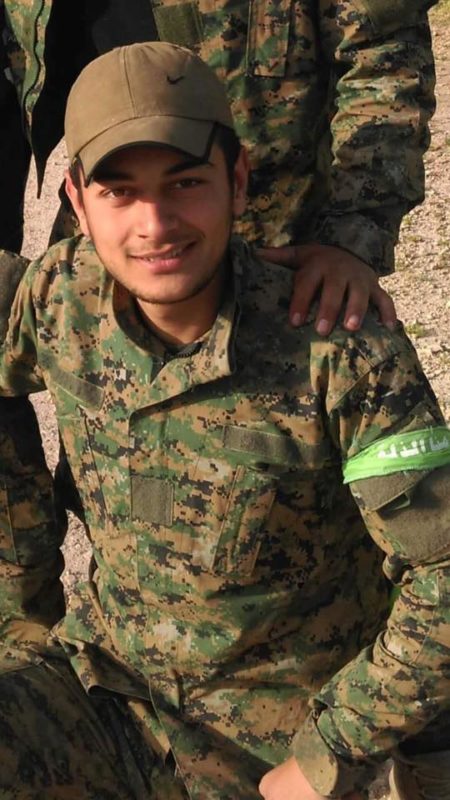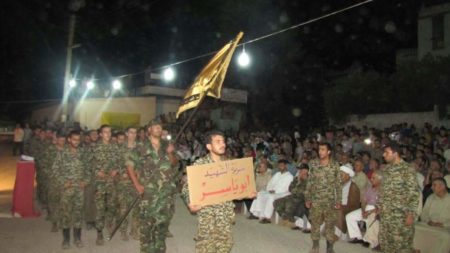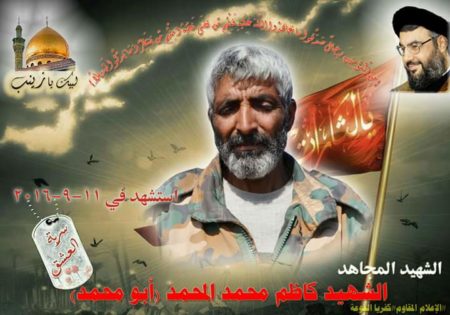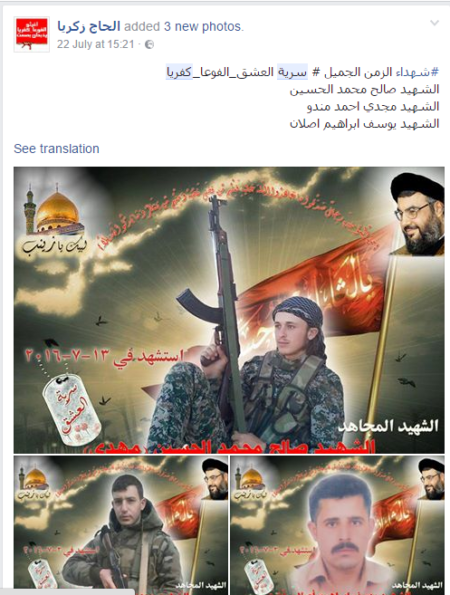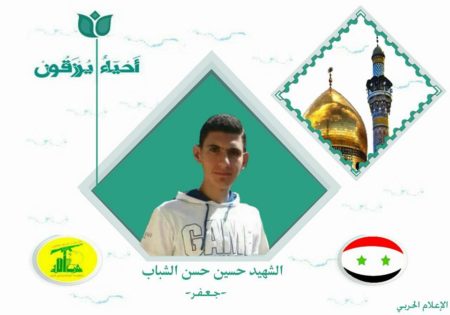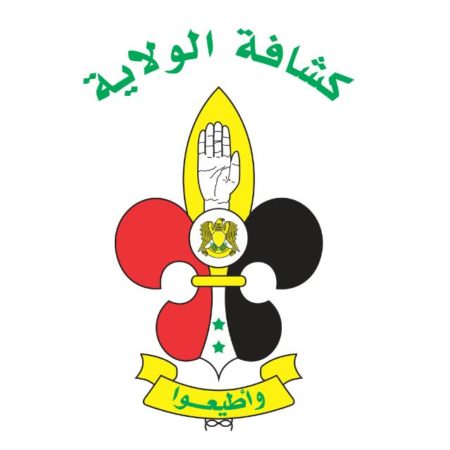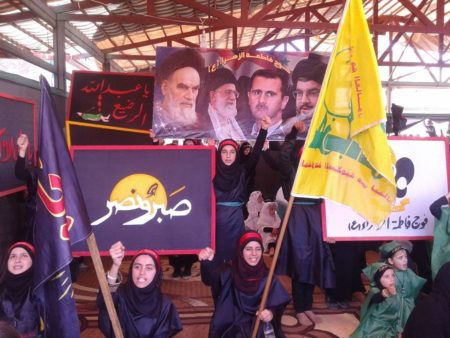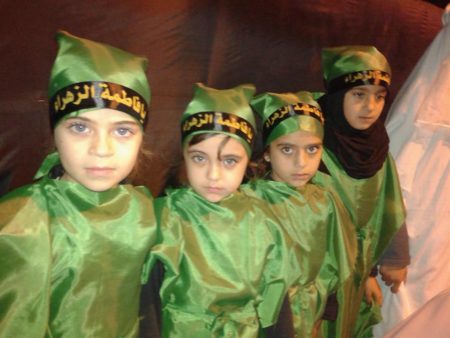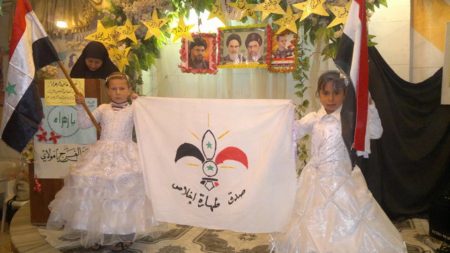The rise and fall of a CIA-backed rebel commander in Syria – by @ErikaSolomon
Posted by Joshua on Thursday, February 9th, 2017
This is a wonderful and important article by Erika Solomon. @ErikaSolomon for the Financial Times.
I have cut out sections, marked with a “….”
The rise and fall of a CIA-backed rebel commander in Syria: Former ‘fixer’ for anti-Assad forces comes to terms with failed US policy
By Erica Solomon

There was a time when “Abu Ahmad”, a bulky man with a heavy limp, held court in the smoke-filled cafés of southern Turkey. Fellow Syrian opposition leaders looked to him for help; foreign intelligence officers sought his opinion. When he crossed into Syria, he brought bags filled with hundred-dollar bills to hand out to rebel fighters. His comrades received US-approved anti-tank missiles, discreetly delivered at the border.
Some rebels called him the CIA’s man in Syria. Now, he struggles to get his calls returned. “We used to joke, ‘If you want something from Barack Obama, call Abu Ahmad,’” another CIA-backed rebel commander recalls. “If someone in the opposition wanted to meet the Americans, they went to him. Now, guys like us, we’re headed to the rubbish bin of history.”
After two years as the CIA’s “fixer”, distributing arms and planning military operations in Syria, Abu Ahmad was thrown into prison. On his release, he was temporarily forced into hiding, then fell into ignominy in the eyes of fellow rebels.
….
The story of his rise and fall offers a rare insight into how the CIA operated within the confines of President Obama’s halfhearted Syria policy. It reveals how the rivalries between US bureaucracies — and, even more importantly, the growing divergence between Washington and its Nato ally Turkey — exacerbated Syria’s mayhem.
***
……

…..A determination not to be dragged into Syria’s war, alongside a recognition of its regional significance, left Washington with one foot in and one foot out — a situation that may prove as problematic in the long run as full-fledged intervention.
Syrians such as Abu Ahmad embody the consequences of this dilemma. In 2013 he joined a covert CIA programme established to channel arms and cash to moderate rebels. He — along with several other commanders — bet that hitching himself to the US would eventually yield the kind of support that helped Libyan rebels topple Muammer Gaddafi in 2011. He lost the gamble badly.
….
“I used to think America was the ruler of the universe. If you ask me whether I was wrong? Yes, I was wrong,” he tells me over raucous Turkish pop music and gurgling water pipes at a café near his home.
“What I cared about was having a good relationship with the Americans. They gave me weapons, I brought them to Syria. The fact that Turkey didn’t like the Americans or the Americans didn’t like the Turks — none of that mattered to me. I didn’t have anything to do with it. Unfortunately, things don’t work like that.”
….
The [Aleppo] victory for Assad and his patron Russia was not only a human tragedy for the civilians bombarded and expelled from their homes, it was a potent symbol of waning US influence in the region. Diplomatic efforts to end the war led by Moscow and Ankara have sidelined Washington.

Obama and his aides defended their Middle East stance as a break with America’s costly legacy of bungled interventions — particularly George W Bush’s invasion of Iraq. But Abu Ahmad’s story shows that even limited interventions can be bungled too — with local allies often paying the highest price.
…..
Rebels and regional diplomats alike share that irritation. “People have this perception the Americans weren’t very involved [in Syria]. But that’s not true — they were, and to a minuscule level of detail for a while in places like Aleppo when [the CIA programme] started,” a regional diplomat says. “The problem with American policy in Syria was in some ways the same as it always was: all tactics, no strategy . . . It was a mess.”
***
Despite a cheery air and a hearty laugh, the circles ringing Abu Ahmad’s eyes are as dark as the shrapnel scars on his legs. During our meetings, he wore the same T-shirt two days in a row and popped about 1600mg of Ibuprofen to keep himself going each day.
It’s easy to see why American officials were once drawn to him. In contrast to the increasing religiosity of some dispirited rebels and their deep-rooted wariness of US interventions, Abu Ahmad relishes banter with his “foreign friends”. He portrays himself as a straight shooter, intolerant of corruption and suspicious of Islamists — or, as he puts it, “anything with a beard”. Other rebels interviewed to corroborate his story jokingly call him a “secular extremist”.
“If you had a question about a battle rebels wanted to do, Abu Ahmad would immediately say this is how many bullets you’d need, how many fighters are actually there, which way they should approach it,” the diplomat says. “The Americans ate it up.”

When Syrian protesters took to the streets in 2011 to demonstrate against four decades of Assad family rule, Abu Ahmad had a comfortable job as an army officer in central Syria. Then security forces started firing on the demonstrators. Farmers, army defectors and local merchants banded themselves into armed units to fight back, and a full-tilt insurgency erupted.
……
While other commanders hoarded weaponry, Abu Ahmad says he calibrated his usage based on assessments of his men and the Assad forces’ likely avenue of attack. “It was like playing chess for me. I love chess,” he says, holding up his phone, on which he was playing the game during our interview.
In 2012, Abu Ahmad was wounded in an air strike and knocked unconscious for 10 days. He woke up in hospital with a metal rod in his leg. His wife, Um Ahmad, a slender woman with perfectly applied make-up, remembers sitting with him day and night, struggling to get him to sit up, eat or speak. “Then, when some of the fighters came to visit him he sat right up, talked and laughed,” she says. “That’s when I realised that from now on, there would be three of us in this relationship: me, him and the revolution.”
***
Abu Ahmad returned a few months later to a drastically changed battleground. The motley crew of the Free Syrian Army had failed to become anything like the force their name aspired to. Corruption had infected many groups. Islamist groups had risen to the fore with the backing of US allies such as Qatar and Turkey, who saw them as more organised and trustworthy clients than their less ideologically driven counterparts.

That climate, along with Turkey’s loose border policy, fostered a rise in jihadis bolstered by foreign fighters. Al-Qaeda’s local affiliate, Jabhat al-Nusra, and a splinter group, the Islamic State of Iraq and the Levant (Isis), leveraged superior military capacity and a developed ideological programme to rise to dominance. (Nusra has since rebranded itself twice, most recently as the Sham Liberation Front, and says it has cut ties with al-Qaeda, although few see the move as genuine.)
“We were so dumb. I was so dumb,” Abu Ahmad says, shaking his head. “What was I thinking? I thought the regime would fall, and we’d go back to where we started. When I came back, I found Jabhat al-Nusra and Isis spreading, and they had all these plans. That’s when I knew we’d eventually need to have a counter-operation against these guys too.”
Some Islamist leaders began questioning Abu Ahmad over rumours he didn’t pray. Fellow rebel commanders, worried about his safety, sent him across the border to help the effort from Turkey. In this newly bustling border region, where once-sleepy towns such as Gaziantep, Kilis and Antakya brimmed with humanitarian workers, refugees and activists, Abu Ahmad met a Saudi intelligence officer looking to co-ordinate a rebel pushback against Isis.
By late 2013, the jihadi group was menacing opposition-held territories in Syria and steadily expanding in neighbouring Iraq. Abu Ahmad co-ordinated between the Saudis and rebels, who managed to push Isis out of the northwestern Idlib province in early 2014.
It was then that he got a call from members of a covert CIA programme based in the Turkish coastal city of Adana. Three men met him at a restaurant. “They were really nice,” he recalls. “They knew everything about me already.”
The CIA declined to comment on Abu Ahmad’s story, but a Washington-based source in the intelligence community confirmed Abu Ahmad had worked with the agency. But he downplayed the significance, saying he was “just a Syrian fixer”. Other elements of Abu Ahmad’s story and details of his relationship with the CIA were corroborated by rebels, activists and diplomats — all of whom declined to be named.
The Americans invited Abu Ahmad to join a covert operations room they were forming with allies including Britain, France, Jordan, Qatar, Saudi Arabia and Turkey to support moderate rebels. Known as the Müşterek Operasyon Merkezi (MOM), it was modelled on a joint operations centre set up in Jordan a year earlier.
The CIA knew about the corruption, of course, everyone in the programme did. It was the price of doing business
From the beginning, the operation faced major obstacles. Turkey’s 800km border with Syria was difficult to control. Furthermore, by 2014, the role of jihadis and the relationships between foreign backers and local clients were deeply entrenched, making it almost impossible to manage the flow of weapons.
“Throughout this [programme] there have been major disagreements between countries and even within governments,” says Noah Bonsey, of the International Crisis Group, an NGO. “Have the rebels failed tremendously? Absolutely. Have the supporting states been just as factious as the rebels? Absolutely.”
Many rebels considered MOM little more than a foreign intelligence foothold within the opposition. But some, like Abu Ahmad, hoped it could at least solidify the rebel hold on northern Syria and ensure a stronger position in peace negotiations.
The operation was based in a nondescript villa in southern Turkey, where rebel commanders met intelligence officers around a long, oval table to propose battle plans and lobby for weapons.
Rebels approved as ideological “moderates” received a monthly salary of about $150 for a fighter and $300 for a commander. “They never told us where we were going,” Abu Ahmad recalls. “ They would put us in a car with the blinds closed. It was like a spy movie, but it was a bit of joke, because we learnt the route over time.”
***
At first the atmosphere was convivial. The Turks let the commanders sleep at the building, which had a kitchen and a cook, so they could finish late-night sessions poring over maps and plans. Soon, however, MOM bureaucracy became a problem for the rebels: battles could turn in hours while it sometimes took weeks for foreign representatives to agree on plans and get approval to deliver supplies such as ammunition, medicine and boots. Rebels turned to the media with tales of MOM’s stinginess.
Some opposition figures and diplomats, however, argue the problem was just the opposite. “MOM became a vehicle for corrupting the Free Syrian Army, not because they gave them too little but because they gave them too much,” says an opposition figure close to MOM-backed commanders.
He says commanders regularly inflated their forces’ numbers to pocket extra salaries, and some jacked up weapons requests to hoard or sell on the black market. Inevitably, much of that ended up in Isis hands. Other groups cut in Jabhat al-Nusra on deals to keep it from attacking them. “The CIA knew about this, of course, everyone in MOM did. It was the price of doing business.”



Abu Ahmad openly accused fellow commanders of such activities, which he says impressed the Americans. “I would say, ‘That guy claims he has 300 fighters, but he has 50. And this guy was doing that’ . . . I would embarrass everyone,” he recalls. “The Syrians were frustrated and saying, ‘He’s a US agent, an informant — how is he talking about us like that?’ But my thinking was that they were stealing from our revolution.”
It’s hard to verify whether Abu Ahmad was as clean as he claims, but his current status is in contrast to that of many rebel commanders, who have large apartments in Turkey, drive new cars and own the latest iPhones.
Abu Ahmad, his wife and their two children share a small flat with his parents and his brother’s family. He sometimes indulges in a bitter fantasy about how his life would be if he’d conspired with other commanders to get a cut for himself. “I wouldn’t have been a ‘traitor’. The people would have held up my picture. I would have had the best cars,” he says. “I could have done it that way, but I didn’t. Instead, I was humiliated.”
But perhaps more damaging than the corruption were the growing rivalries between MOM’s foreign backers. As divides opened, each power moved to bolster its favoured commanders.
“A toddler could enter the MOM room and be able to tell which guy the US was pushing for, who the Turks wanted, or who the Saudis were pushing,” says Abu Omar, a friend of Abu Ahmad and a fellow US-backed rebel commander (not his real name). “MOM became the legal face to cover all the extra support they were giving these groups behind each other’s backs.”
The worst split was between the US and Turkey. Tensions rose after Isis seized Iraq’s second city, Mosul, in June 2014 and blitzed across Iraq and Syria. Washington began a Pentagon-led air campaign against Isis but support for ground forces went to a Syrian Kurdish militia known as the YPG, rather than the rebels.
The Pentagon found the YPG attractive partners because they didn’t have to worry about Islamist infiltration — and, unlike the rebels, they were not fighting Assad. But Ankara was infuriated: it has fought a four-decade war with the YPG’s parent organisation, the Kurdistan Workers’ party (PKK), over Kurdish ambitions for self-rule in south-eastern Turkey, and saw their growing enclave across the border as a threat.
‘America was pressuring us with its control of aid, Turkey with its control of border access. They’re not allies, they’re liars’
“I’ve been struck by how sincere US and Turkish officials seem in their misunderstanding of each other. Sometimes US officials seem to genuinely not understand why YPG backing is such a big deal to Turkey,” says Bonsey, of the International Crisis Group.
“By the same token, Turkish officials didn’t seem to understand how upset US officials were with their lack of an effort to weaken the facilities of jihadi groups using their border. They were talking past each other.”
US-backed rebels felt caught in the middle, suddenly seen as traitors by their Turkish hosts and the Islamist groups they supported. Abu Ahmad started to hate visiting MOM. “I was stuck between squabbling parents,” he jokes.
He recalls a meeting where a Turkish official pointedly asked him, in front of his US counterparts, why the US strikes were helping the Kurds but not rebels like him. The CIA officials sat quietly before jumping in to say the strikes were conducted by the Pentagon, a separate entity.
The vagaries of US policy became harder to explain to outraged fighters, already growing more sympathetic to the Islamists, says Abu Omar, especially after US-backed YPG forces seized several rebel-held towns near his base in north-western Syria in the winter of 2016.
“I had 57 fighters who died on the frontline, and twice as many who lost their limbs,” he says. “How can I explain to them that the YPG means Pentagon support? And that MOM means CIA support? These are Syrian country boys — they don’t understand this stuff.”
CIA-linked commanders such as Abu Ahmad and Abu Omar also found it harder to work in Turkey. Abu Omar struggled to get his residency permit renewed and was informed he had been put on a security watch list. When he asked the Americans to raise the issue with Turkish officials, they told him the matter was out of their control.
***
Abu Ahmad’s dilemmas bordered on farcical. In MOM’s early days, he says, Turkish officials escorted him over the border for meetings. Then, after the spat with the Americans, they said they could no longer help. He started paying smugglers to get to Turkey for the international meetings.
He recalls arriving one day at the border in time to see one of Turkey’s favoured commanders jump into a car bound for a meeting. “He waved at me and said, ‘Bye!’ I just stood there staring,” Abu Ahmad says. When he complained to the Americans, they laughed but again said they could do nothing.
It was at this time that rebels, seeking to organise their factious forces, formed a new alliance called Jabha Shamiya. They hoped it would lessen the tug of war between Washington and Ankara. Instead it grew worse, and the alliance was forced out of the covert programme.

“America was pressuring us with its control of MOM aid. Turkey was trying to pressure us with its control over border access,” says another rebel leader from Aleppo, who asked not to be named. “They’re not allies, they’re liars. When you have allies like Syrians have, you don’t need enemies.”
Abu Ahmad resigned rather than join Jabha Shamiya but soon the Americans asked him to be their consultant, handing him about $1,000 a month. He became known among Syrians as someone who could arrange meetings. His critics insisted he was helping the CIA plot failed assassination attempts on Nusra leaders and undermine Turkish-backed groups. Abu Ahmad denies any plots, but admits he worked to lure groups back into MOM.
In the summer of 2015, the US launched the Pentagon’s “Train and Equip” programme for select rebel fighters. It cost $500m, and went horribly wrong. “I was shocked,” Abu Ahmad says. “The Pentagon came and started to meet with people in Gaziantep, and picked people both the CIA and MOM saw as failures.”
After the first group of T & E fighters was kidnapped by Nusra, he suspected the American departments were not sharing information. Then a second group, under a newly dispatched commander, surrendered to Nusra.
“This is when I realised the Americans were working in two different directions,” he says. He started asking western diplomats to explain the US political system. They told him about Congress, the White House and different intelligence and military branches. “If Obama is going this way, and people in Congress that way, and the people working on the ground are saying, ‘No, this works, that doesn’t’, is a decision actually made?” he laughs. “Maybe this is a case of too much democracy.”
‘I used to think America was the ruler of the universe. If you ask me whether I was wrong? Yes, I was wrong’
Meanwhile, the US-Turkey dispute was deepening as they debated a potential no-fly zone in northern Syria. One of the failed plan’s many points of contention was over who in Syria should be their point person. The CIA wanted Abu Ahmad, according to several commanders. The Turks wanted someone closer to them.
A day before a contentious MOM meeting to discuss the issue, Abu Ahmad says a Turkish police car pulled up outside his home. Alarmed, he stuffed all his cash in his pockets as the officers knocked on his door.
With that, a Nato ally had arrested one of Washington’s local allies. Abu Ahmad was shuttled between different security headquarters for hours. “They asked me to tell them what I was arrested for,” he says. “I told them, ‘I don’t know either. You’re the ones who brought me here, you’re supposed to tell me the charge.’”
***
Eventually he was thrown into a nearby prison, where he waited for days while his wife and friends made frantic calls to US officials. The CIA was unable to secure his release. “They did try to help him get freed,” says the Washington-based intelligence source, “but it is unlikely it went up very high, given that he was helping with a supposedly secret CIA operation.”
Abu Ahmad soon realised the only way to get out was to agree to be deported to Syria — essentially a death sentence, given how much Islamists despised him. But he signed the paperwork and was dropped at the border. “I used the money I had and paid a smuggler to sneak right back in to Turkey.”
He hid in a house on the border for more than a month. Eventually, the Turks promised to leave him alone, as long as he stopped working with the Americans and the rebels. He was heartbroken but accepted the terms, and has since lived on the margins of Syrian society in Turkey, relying on friends such as Abu Omar to lend him money.
One summer evening, Abu Ahmad drove us to Abu Omar’s home on the Turkish coast for “some good reminiscing about the revolution”. Abu Omar looked trim, with short hair, a polo shirt and a brand new iPhone. He took us out for a platter of fish and immediately launched into lamentations.
His group has lost territory and popularity to Nusra, he says, and no one seems to care any more about working with the Americans. “The Turks treat me as though I’m an American. Jabhat al-Nusra treats me like I’m a traitor. No one treats me like I sit with the Americans because I’m a Syrian who wants to do the best he can for his cause,” he says. “I wonder how the Americans see me. Do they see me as a patriot? Do they see me as a mercenary?”
The Turkish-American relationship has remained fraught, despite President Trump’s renewed discussion of a no-fly zone and Washington’s tacit approval of Turkey’s intervention in northern Syria to clear Isis and the YPG from along its border. “There’s been a 1,000 per cent increase in the improvement of relations — and it’s still terrible,” says analyst Aaron Stein, at the Atlantic Council in Washington.
For Abu Ahmad, the psychological strain has become physical. His wife calls on the drive home, fretting. Over the past few months, she says, he has pulled the car over three times, worried he was having a heart attack. “Nothing is ever wrong,” she says. “The doctors say it was a panic attack.”
On some days, Abu Ahmad thinks of leaving the region behind altogether. But that isn’t easy. Germany rejected him over his past ties to a rebel group that has since been accused of war crimes.
Last year, he says, he asked some American officials to help him move to the US. They told him to register first with the UN as a refugee. He never heard back, and Trump’s recent executive order makes it increasingly unlikely that he would now be accepted into the US.
He called up his old CIA contacts to see who could help. “They told me, ‘We’re sorry, that is a State Department issue,’” he says. “‘These are separate departments.’”
Erika Solomon is the FT’s Middle East correspondent
Photographs: Ivor Prickett / Panos Pictures; AFP/Getty; Tristan Vickers / Panos Pictures; Universal History Archive/UIG via Getty

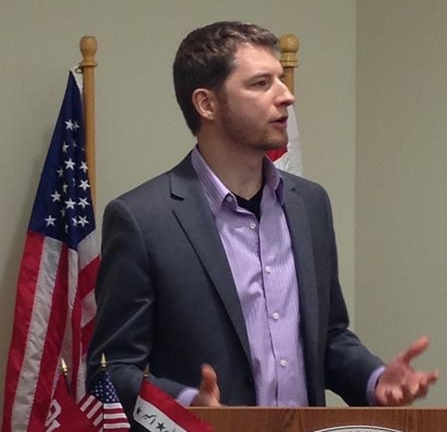 by Matthew Barber
by Matthew Barber



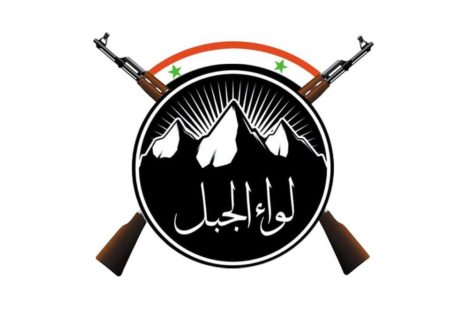
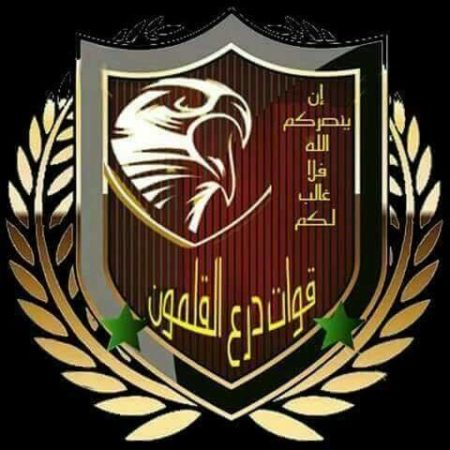
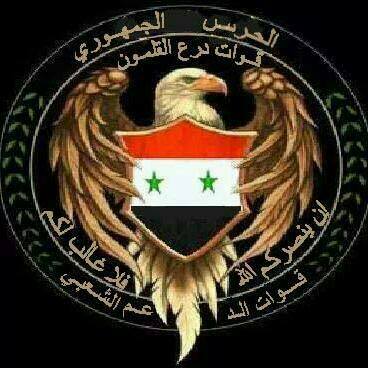
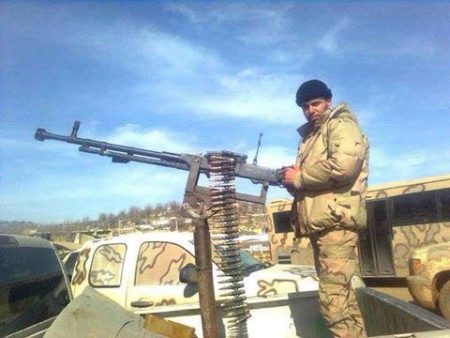
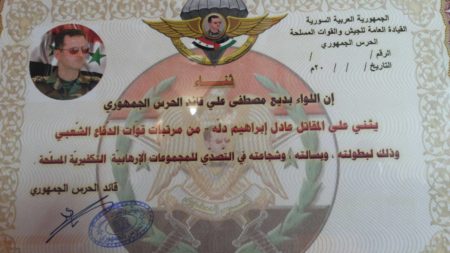
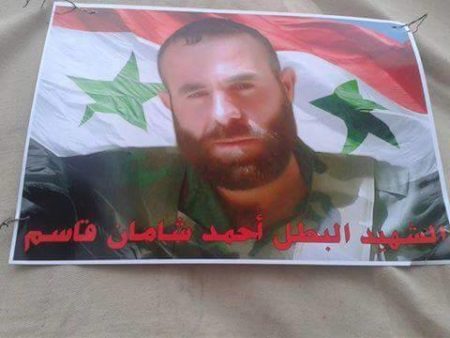
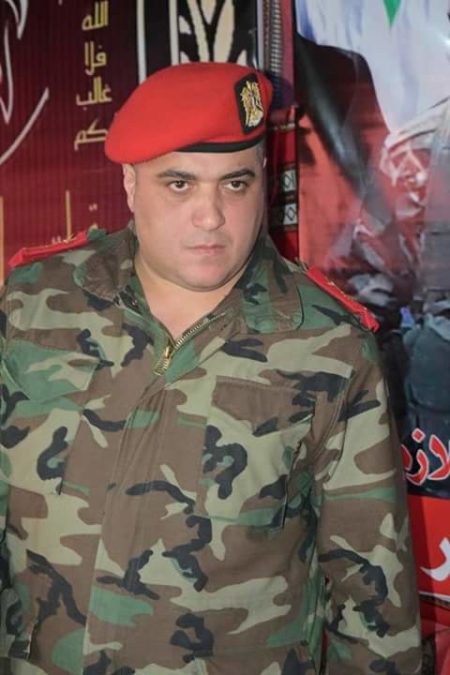

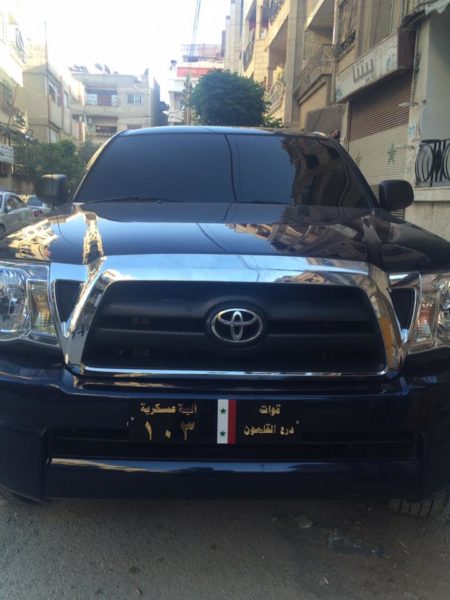
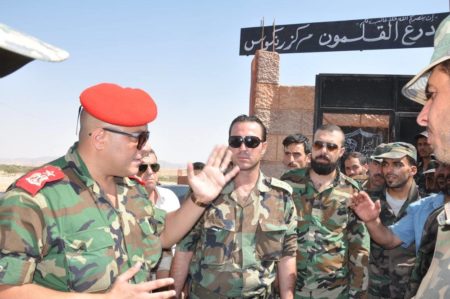
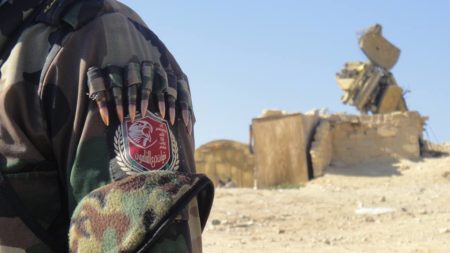
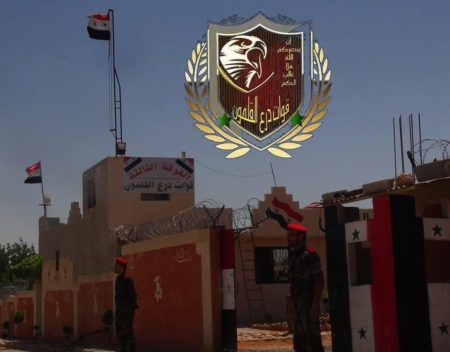
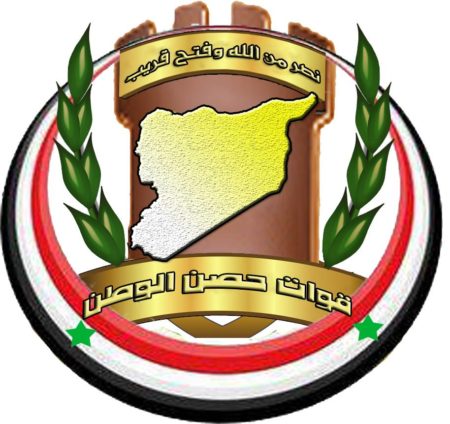
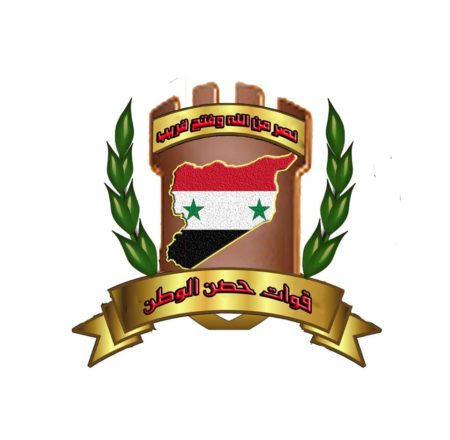
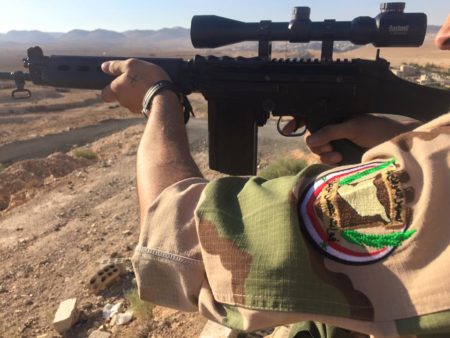
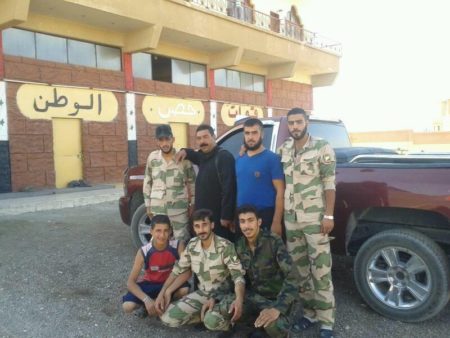
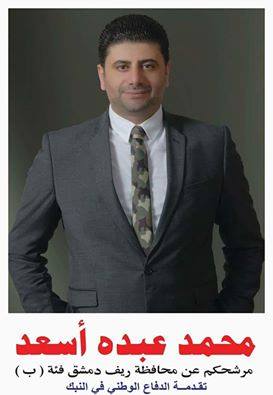
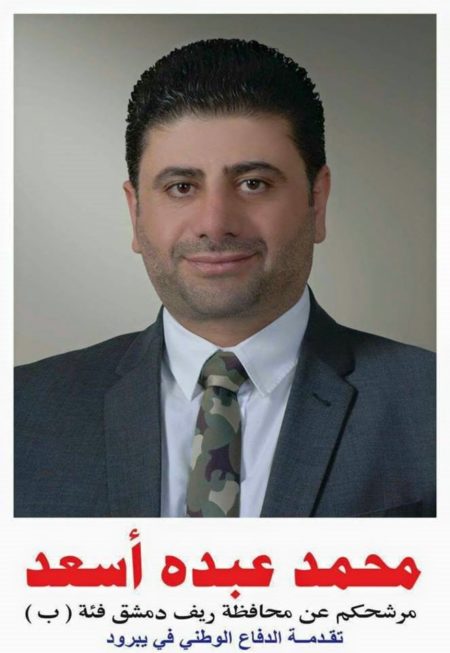
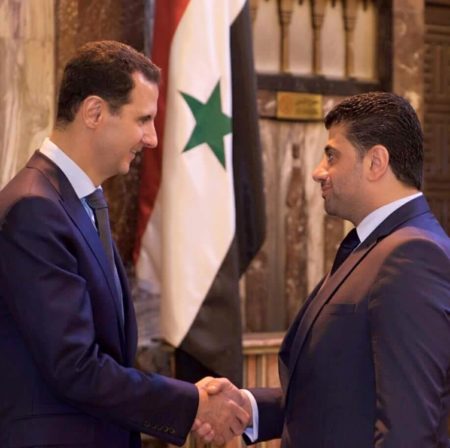

 By
By 


